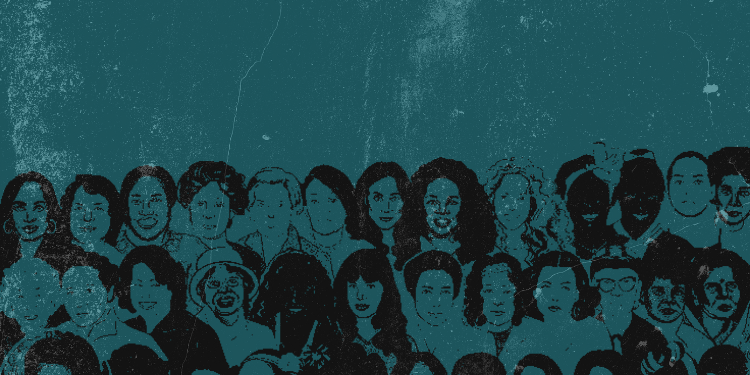CONTEXT
On March 28, four days after Prime Minister Narendra Modi announced a nationwide lockdown till mid-April to halt the spread of Covid-19, chaotic scenes of migrant workers standing in long queues emerged from Delhi’s Anand Vihar Bus Terminal [1]. Numbering in thousands, these were mostly daily wage labourers from Delhi and neighbouring satellite cities scrambling to board overcrowded buses to their native villages across Uttar Pradesh, Bihar, and other states.
As the lockdown period progressed, it became clear that the chaos at Anand Vihar was a small snapshot of a much larger scenario of movement of migrant workers across the country. In fact, as per a status report submitted by the Ministry of Home Affairs (MHA) in the Supreme Court in March, roughly 5 to 6 lakh people migrated ‘bare foot’ to their native places in the initial days after the lockdown was announced [2]. Many more have been stranded in major urban centres and struggling for wages and essential items, with some even resorting to violence and arson as a result [3] [4]. On 14th April, the day the PM announced the extension of the lockdown, thousands of daily wage workers assembled in Mumbai’s Bandra reportedly to demand transport arrangements to go back to their native places [5]. The MHA report also notes that many villages have barred the entry of these migrant workers owing to fears that they might be carrying the novel coronavirus. The official response, as per the report, has been to halt the movement of the migrants and provide them shelter, food and medical facilities wherever they have reached. As part of this response, 21,064 relief camps were set up by various state governments and union territories, sheltering 6,66,291 people at the time of the release of the report. In a subsequent status report released on April 27, the MHA has stated that the number of relief camps has gone up to 37,978 sheltering 14.3 lakh people, while 26,225 additional food camps have been set up feeding 1.34 crore people. The report also states that 16.5 lakh workers across the country are being provided food and shelter by their employers [6].
BEHIND THE MIGRATION: A STATE OF CHAOS
The MHA report from March describes the movement of migrant workers as undertaken “on their own”, and a result of panic created by “fake and/or misleading news/social media messages”. The report also states that “there was no necessity for migration of workers to rush to their villages…their daily needs were being taken care of wherever they were working and the daily needs of their family members were being taken care of in their respective villages (sic)”.
Contrary to that, media reports seem to indicate that people attempted to leave due to unpaid/underpaid wages, unemployment, eviction by landlords, and lack of rations after the announcement of the lockdown [7] [8] [9]. The findings of a phone-based rapid assessment survey of more than 3000 migrant workers in the construction industry conducted by Jan Sahas, a Delhi-based NGO, between March 27-29 also seem to corroborate the media reports [10]. As per the survey, 92.5% of respondents have lost work for 1-3 weeks translating into a loss of income of INR 4000-10000 per worker. Considering that these are daily wage workers who live a hand-to-mouth existence, the resulting economic burden for an individual worker is huge. This is indicated by the fact that 66% of respondents in the survey felt that they would not be able to sustain themselves and their families beyond one week. The survey also found that 42.3% of respondents did not have any rations left. Out of those, 33% indicated that they did not have money to buy rations and 26% either did not have ration cards or simply couldn’t avail them because they were migrants.
Considering the findings mentioned above, there was genuine fear among migrant workers regarding income loss and impending hunger that has pushed many of them to undertake perilous journeys towards their native places. This fear was possibly aggravated due to some misleading/fake news. The result has been an inevitable disregard of social distancing norms denting the efforts to contain the spread of Covid-19. But behind this sudden rush of migrants that seems to have caught the policymakers off-guard, there are some consistently overlooked policy gaps that, going forward, need to be addressed.
INVISIBLE MIGRANTS
Lakhs of workers migrate across India every year. As per the Economic Survey 2016-17, an estimated 90 lakh people migrate for work between states annually. That means 7.5 lakh people migrate for work between states in a month, more than the rough estimate of the barefoot migration since the lockdown as per the initial MHA report. The difference, it seems, is that suddenly, migrating workers have become visible in an urban space that has been devoid of movement due to the lockdown. India’s urban policy discourse has identified the ‘invisibility’ of migrant workers as a long-standing problem [11]. At the fundamental level, there is an absence of actual annual data, particularly regarding the movement of seasonal or short-term migrants who form the bulk of work-related migration in India. At present, only estimates of annual migration of workers are available from various government and independent sources, making the actual movement of workers invisible to policymakers and public alike. Comparatively, the census, although providing the actual count of migrants, is a decadal exercise which doesn’t show yearly trends. This is a serious lacuna when one considers the fact that 28.3% of India’s total workforce are migrants [12]. In the absence of hard data, framing a policy response to a developing situation such as the current migration becomes even more difficult, let alone informing long-term policies better.
LACK OF PORTABILITY IN PUBLIC SERVICES
As per media reports and the Jan Sahas survey quoted earlier, lack of rations is a key issue that migrant workers across the country are grappling with currently, forcing them to make a dash towards their native places. Presumably, they hope to have better access to food, including that under the Public Distribution System (PDS) in their home states. This is understandable because one of the key entitlements that migrant workers lose access to when they move is affordable ration through the PDS [13]. Migrants also lose access to other entitlements such as caste certificates, voting rights, and benefits under various government schemes as portability of such entitlements is either non-existent or marred by administrative issues [14]. The latter is particularly true in the case of access to food. Even though the National Food Security Act 2013 provides universal access to food for citizens regardless of where they reside, portability is sparse because beneficiary lists are prepared by state governments. Notably, the One Nation One Ration Card scheme that ensures portability of entitlements through PDS, is currently operational only in 12 states of the country and was supposed to go nationwide on 1st June, 2020 [15].
ACCESS TO INFORMATION
While portability remains unaddressed, access to reliable information about entitlements and rights among migrant workers is also a challenge. As per the Jan Sahas survey quoted earlier, 36.9% of respondents had no information on the benefits announced by the government for them since the lockdown, while 62.4% knew about the benefits but did not know how to access them. The Report of the Working Group on Migration under the Ministry of Housing and Urban Affairs released in 2017 had identified access to information as a key issue within the broader challenge of access to public services faced by migrating workers [16]. This, as per the report, stems from both a lack of dissemination of information as well as low general awareness among migrant workers about social protections available to them. In this context, the report had recommended setting up community radio, migrant helplines, and Migrant Resource Centres (MRC) to disseminate reliable information among migrant workers regarding their entitlements. This will also help them access support services in case of disputes related to unpaid/underpaid wages, denial of entitlements, as well as access to health services. Considering the fact that the MHA report quoted earlier has identified spread of fake/misleading news as a source of panic among migrant workers since the lockdown, migrant helplines and MRCs could have played a critical role in the present context. Although some states have launched migrant helpline numbers in response to the current situation, the chaos certainly could have been avoided.
CONCLUSION
Invisibility of migrants, issues with portability of entitlements, as well as lack of awareness about these entitlements are fundamental policy challenges surrounding migrant workers in India. Remaining unaddressed for a long time, these challenges have played a crucial role in aggravating the degree of distress due to the nationwide lockdown to migrant workers. There are, however, other significant challenges that migrant workers face outside of the present context, such as lack of affordable housing, harassment and abuse, structural issues that force them out of their native places, among others. The present situation must lead policymakers to formulate comprehensive long-term responses that can address the pre-existing problems faced by migrant workers across the country that have been made worse by the lockdown. In the near-term, such responses should involve setting up of a robust data collection network on the movement of workers within and between states so as to make them, at the least, visible to the public eye.






